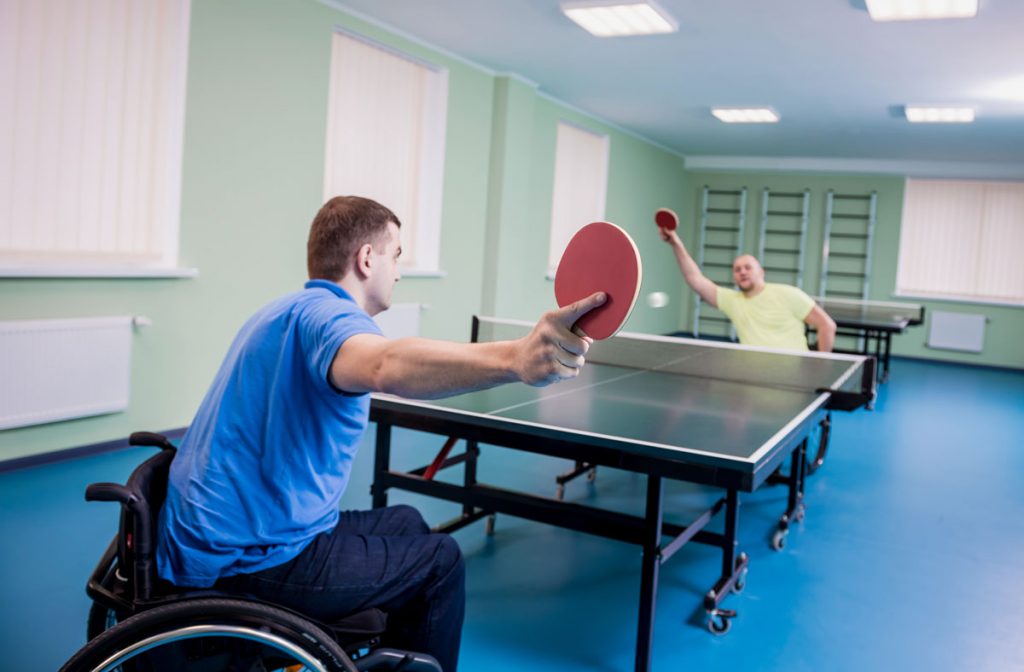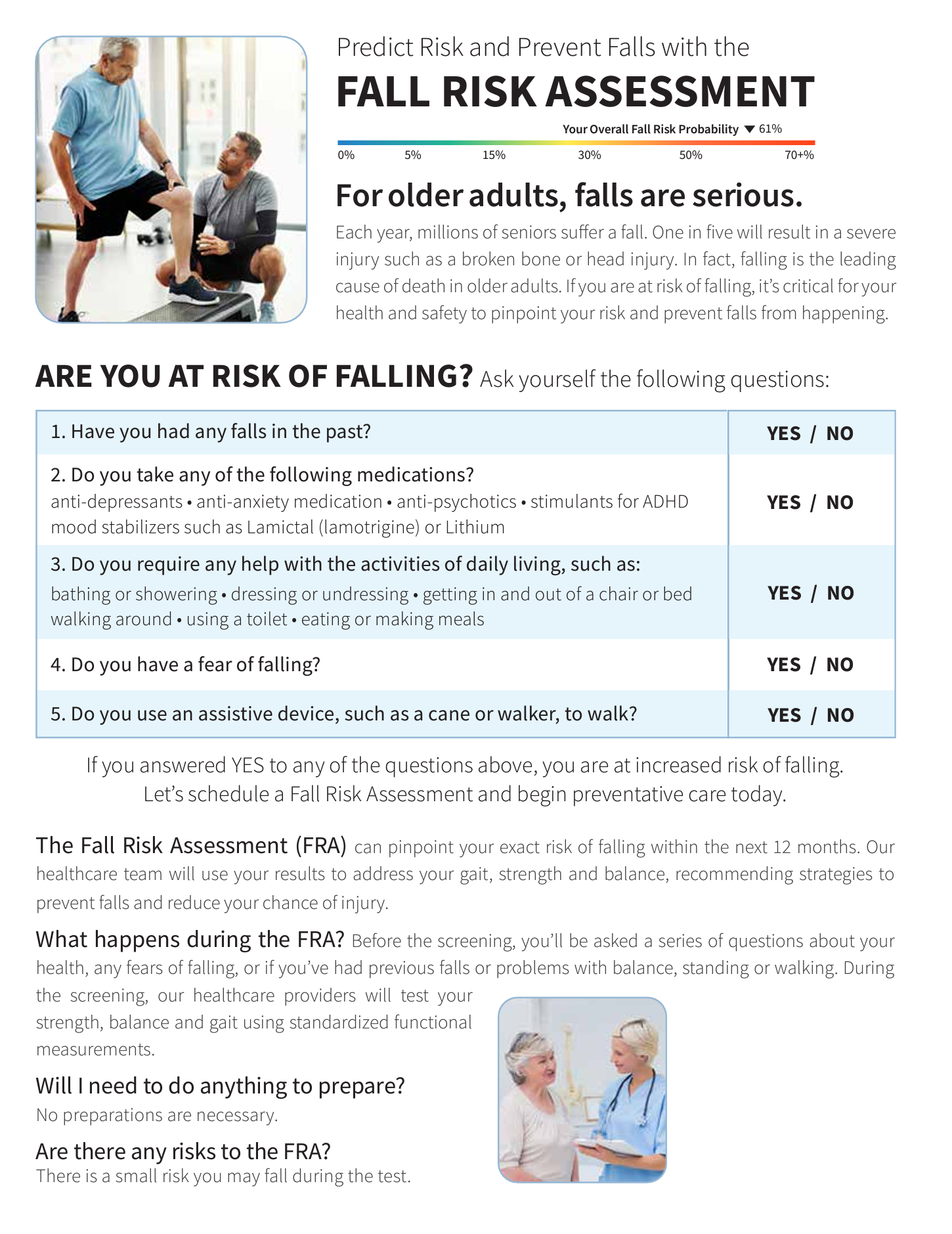Excitement About Dementia Fall Risk
Table of ContentsAll about Dementia Fall RiskOur Dementia Fall Risk DiariesLittle Known Questions About Dementia Fall Risk.What Does Dementia Fall Risk Do?
A fall danger assessment checks to see just how likely it is that you will certainly fall. It is primarily done for older adults. The assessment normally consists of: This consists of a collection of questions concerning your overall health and wellness and if you've had previous falls or issues with balance, standing, and/or strolling. These tools check your strength, balance, and stride (the way you walk).STEADI consists of testing, evaluating, and treatment. Treatments are referrals that might decrease your danger of falling. STEADI consists of 3 actions: you for your threat of succumbing to your risk elements that can be enhanced to attempt to protect against drops (as an example, balance problems, impaired vision) to decrease your risk of falling by utilizing efficient methods (as an example, giving education and learning and sources), you may be asked numerous inquiries consisting of: Have you dropped in the previous year? Do you feel unsteady when standing or walking? Are you stressed over falling?, your company will evaluate your stamina, balance, and stride, utilizing the complying with loss analysis devices: This test checks your gait.
If it takes you 12 secs or even more, it may imply you are at higher threat for a fall. This examination checks stamina and equilibrium.
The settings will certainly obtain more challenging as you go. Stand with your feet side-by-side. Relocate one foot halfway forward, so the instep is touching the large toe of your various other foot. Move one foot completely before the various other, so the toes are touching the heel of your other foot.
A Biased View of Dementia Fall Risk
A lot of falls take place as an outcome of multiple adding aspects; consequently, handling the threat of dropping begins with recognizing the aspects that add to drop danger - Dementia Fall Risk. Some of one of the most appropriate threat aspects include: History of previous fallsChronic clinical conditionsAcute illnessImpaired gait and equilibrium, lower extremity weaknessCognitive impairmentChanges in visionCertain risky medicines and polypharmacyEnvironmental factors can likewise increase the danger for falls, including: Poor lightingUneven or damaged flooringWet or unsafe floorsMissing or damaged hand rails and grab barsDamaged or poorly fitted devices, such as beds, wheelchairs, or walkersImproper usage of assistive devicesInadequate guidance of individuals staying in the NF, including those that display hostile behaviorsA effective loss danger management program calls for a complete scientific assessment, with input from all members of the interdisciplinary team

The treatment strategy should also include interventions that are system-based, such as i was reading this those that advertise a secure environment (appropriate lights, hand rails, get bars, and so on). The efficiency of the treatments need to be assessed occasionally, and the care strategy changed as needed to show changes in the fall threat assessment. Executing a fall risk monitoring system utilizing evidence-based ideal method can reduce the prevalence of drops in the NF, while limiting the possibility for fall-related injuries.
Dementia Fall Risk for Beginners
The AGS/BGS standard suggests screening all grownups aged 65 years and older for autumn risk each year. This testing contains asking clients whether they have actually fallen 2 or even more times in the previous year or sought clinical attention for an autumn, or, if they have not fallen, whether they really feel unstable when strolling.
Individuals who have dropped when without injury should have their equilibrium and stride assessed; those with gait or equilibrium abnormalities ought to get extra analysis. A history of 1 loss without injury and without gait or balance issues does not necessitate additional assessment beyond continued yearly loss risk screening. Dementia Fall Risk. A loss danger assessment is required as part of the Welcome to Medicare evaluation

Our Dementia Fall Risk Statements
Recording a drops background is one of the top quality indications for fall avoidance and monitoring. A vital component of danger evaluation is a medication testimonial. Several classes of medications boost loss a fantastic read risk (Table 2). copyright drugs specifically are independent forecasters of drops. These drugs tend to be sedating, alter the sensorium, and impair equilibrium and stride.
Postural hypotension can typically be alleviated by minimizing the dose read this of blood pressurelowering medicines and/or quiting medicines that have orthostatic hypotension as a negative effects. Use above-the-knee support hose pipe and resting with the head of the bed boosted might likewise reduce postural decreases in blood stress. The advisable components of a fall-focused physical evaluation are revealed in Box 1.

A TUG time more than or equivalent to 12 seconds recommends high loss threat. The 30-Second Chair Stand test examines lower extremity strength and balance. Being unable to stand from a chair of knee height without using one's arms shows enhanced loss danger. The 4-Stage Balance examination analyzes fixed balance by having the person stand in 4 settings, each considerably more difficult.